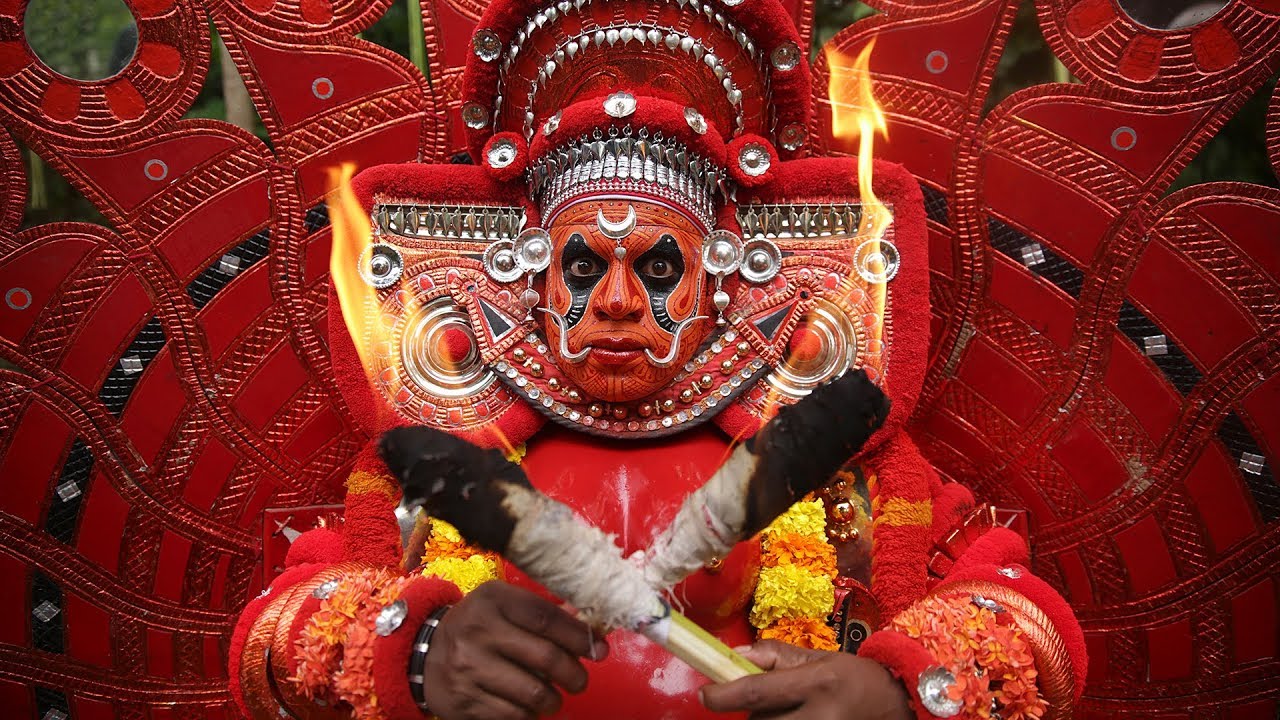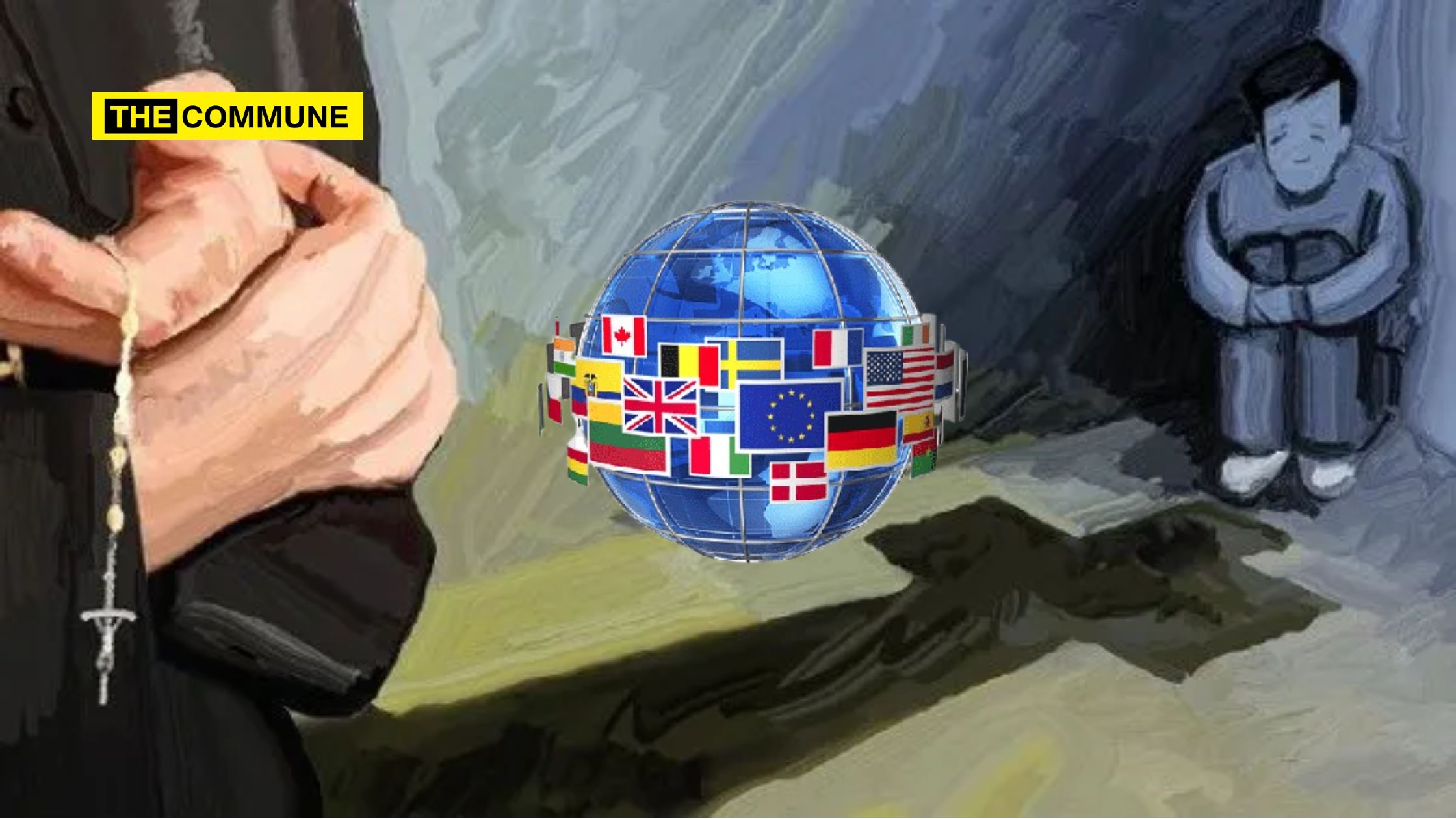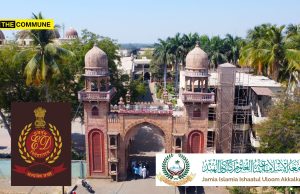
This is part three of the series titled: The Moral.
Read part one here and part two here.
In the previous part, we saw that the average Narrativewala RW, who is very much alike the left-liberal, often makes this claim: Hinduism is so open and tolerant that it allows for me to lead the hedonistic lifestyle of a Westernised Indian urbanite, because Hinduism has no rules and nothing is considered necessary in Hinduism. Narrativewalas also tend to claim protection of the Charvaka Kavacha against anyone telling them that they have strayed far away from their Hindu roots.
We now know that this claim leads to the conclusion that there is no Hinduism, because if a group has no rules and defining features, surely that group cannot and does not exist. We examined this claim of a phantom Hinduism (which itself is a left-liberal claim), and saw how the Hindu is stripped of his awareness, his sense of belonging and of the sense of ‘mine’(Hindu) and ‘yours’ (non-Hindu). Thus the Hindu loses the sense of the ‘other’ and is disarmed. Lulled into a false sense of security, peace and harmony with the “Hinduism accepts everything” trope, and believing that conversion is just cross-pollination between the branches of a large global family, the Hindu becomes ripe for conversion. So we understand why left-liberals and their allies make this claim of a non-existent Hinduism. But why do Narrativewalas?
The problem is not the claim itself. As we saw, even when we accept that Hinduism has boundaries or essential features, we reduce Hinduism to a similar type of entity as Abrahamism. The problem is what underlies the claim. Whether Hinduism has requirements is a question that arises only in a centralised structure because the notion of ‘requirements’ itself arises only in centralised structures. The mandala model is purpose-built for describing centralising institutions (e.g. the church, the state, the church-state). In a centralised, doctrinally bound system like Abrahamism, there are features which decide membership and therefore are ‘requirements’. This is why there are beliefs you must accept in order to be an Abrahamic. If you want to convert to Islam, you must recite an Arabic statement which is an affirmation of the cult’s two most fundamental tenets: that there is no god except the cult’s god and that Mohammed is that god’s prophet. The framework of Hinduism, though, doesn’t have the notion of ‘requirements’ itself. There is a difference between saying that the features of Hinduism are inessential and saying that the concept of essentiality is inapplicable. This subtlety is where the Narrativewala falls into the perspectival cage.
Let There Be Light
Suppose I say about Indian cuisine that we don’t eat cockroaches. You could ask me whether there is any rule in Indian cuisine against eating cockroaches. If I say no, does that mean Indian cuisine allows eating cockroaches and that if you, an Indian, prepare a dish with cockroaches, it will be considered a part of Indian cuisine? No, the answer is wrong. The correct answer is that the question doesn’t make sense. The notion of ‘rules’ doesn’t apply here. Even though features are not prescriptions and there is no ‘rule’, features do have descriptive power and if what you make doesn’t fit the description, it is not Indian cuisine. That’s what I mean when I say ‘we don’t eat cockroaches’. Similarly, when it is said that ‘you cease to be Hindu if X’, this is not a fatwa or ruling of a centralising organisation, it is not a threat of excommunication. It is a statement of fact, a description of the tradition. It is important to make this distinction between description of what is and prescription of what should be because the confusion between these two is what makes Hindutvavadis, conservatives and traditionalists look like the ‘far-right’ which wants to turn hippy Hinduism into Abrahamism.
Since the very notion of ‘requirements’ doesn’t make sense in the context of organic, decentralised phenomena like cuisine, culture, language and pagan traditions, the answer to whether Hinduism has ‘requirements’ is neither ‘yes’ nor ‘no’. The answer is that the question makes as much sense as the question ‘does the colour green sleep furiously?’ It doesn’t matter what answer you give to the latter question because that detail about colours is of no consequence. But in the Hinduism question, the wrong answer is leading to serious civilisational issues.
We can look at it from the membership angle. In Abrahamism, essential features decide membership. In other words, the essential practice of Abrahamism by its members is centrally controlled and dictated by doctrine. You agree to terms and conditions if you want to be a member. In Hinduism, features merely describe what members do practice. It describes the tradition itself. In Hinduism, membership decides features. There is no central control here since practice is not defined by doctrine. In fact, features are very often not even discernible or vague when they are. But a conservative tendency arises since traditional practice by prior members itself defines the features of Hinduism. This is why new traditions arise as ‘outgrowths’ of old traditions. Continuity with tradition is thus the heart of what makes someone or something ‘Hindu’.
How do we understand the nature of ‘beliefs’ in Hinduism then, since they are not prescriptive ‘doctrines’? They are wisdom arisen out of the practice of tradition itself. They are the intended product of traditional practice: learning. So they are certainly not ‘inessential’. That they are not ‘requirements’ does not mean that you can just sidestep them without even acknowledging. However, the experiential aspect is prior to the intellectual. Even the Vedas are intellectualisations of experiences. The matchless sage-poets encapsulated the profoundest spiritual experiences of eternal truths in their immortal words. Note that wisdom itself is prior to intellectualisation. Learning is pre-linguistic here, it does not arise in the form of words but is just expressed in words. SN Balagangadhara calls it action-knowledge in his 1987 paper ‘Comparative Anthropology and Action Sciences: An Essay on Knowing to Act and Acting to Know’. On the other hand, the Aasmani Kitabs are not treated as outgrowths or intellectualisations of experience. Abrahamics believe them to be the ‘Word of God’ and the monotheistic god does not need to experience truths; he dictates them. He declares ‘Let there be light’ and there is light. In this case, intellectualisation is prior to experience. It has normative power; it sets the norm, rather than being informed by it. Rather than being shaped by experience, being an expression of experience, it shapes experience itself by declaring a particular perspectival framework as the objective one, through which the world must be made sense of. Merely having ‘beliefs’ does not make a tradition dogmatic and Hindus don’t need to trivialise their beliefs as ‘inessential’ just to show that they’re not dogmatic. Abrahamism has a specific type of beliefs: it has a perspectival cage.
If we were to model this situation, we’d have to ditch mandalas. The notion of continuity may be of help here. Paganism and other organic entities are like trees: branches sprouting out of branches, each set of customs and practices an outgrowth of earlier outgrowths. They grow into vast networks of customs and practices, each connected to some other. Think of a structure made of nodes and connectors, each node denoting customs, traditions and practices. The ‘core’, to use mandala terminology, is simply the group of oldest, most ‘traditional’ nodes (our Vedic roots) of the network. But that doesn’t make it a centralising institution or a ‘doctrine’. You can’t spot the ‘core’ just by looking for the most well-connected node of the network. That tells us only the most influential node, not the oldest. More Hindu practices involve devas like Ganapati, Rama and Krishna than Indra, Agni and Varuna, for instance. A network is also by nature decentralised, just as a mandala model is by nature centralised. And it’s easy to see why you can’t live the ‘modern’ Indian urbanite’s aspirational lifestyle and still be Hindu. Any new node has to be connected to some other node to be part of the network. It has to be an ‘outgrowth’ of tradition itself. This is also why a network is by nature very conservative (as is India).
Summarising The Essence Of Tradition
Practice is central to Hinduism because practice is the way Hinduism happens, so to speak. Practice is what produces Hinduism and practice is what sustains it. It is the method by which the structure and the nature of Hinduism manifests itself. It is the vehicle of Hinduism. Sampradayas arise through practices and practice preserves sampradayas. Beliefs, theories, ideas, philosophies, concepts—in a word, learning—arises as a product of practice. In fact, distillation of wisdom is one of the most important purposes of practice. Practice also produces refinement in action, a certain kind of maturity and ‘educatedness’ in the way we conduct ourselves. In other words, it produces samskara. Self-refinement (or refinement of self-knowledge, which is the same thing, really) is the constant companion of practice. Practice produces the Indian civilisation itself, in the fullest glory of its kaleidoscopic variety. And the name of this civilisation is Hinduism. Practice produces practices too. It produces its own variety.
The inner workings of practice may be understood by looking at rituals. The word ‘ritual’ is meant in its most general sense here. Hinduism being in its essence quite ritualistic, the practice of Hinduism has always involved rituals of various kinds. Regular and repeated personal readings of the Mahabharata and Ramayana, the katha traditions, constant mental japa of the panchakshari, writing down ‘Rama’ thousands of times, listening to bhakti sangeeta everyday with regularity, reciting some stotras daily, daily aartis and personal pujas at the home shrine to our ishtadevatas, the nityakarma of the Brahmins, writing ‘Shri’ at the top before we write anything, all these are ritualistic practices. Some are designed to produce certain states of mind, some to constantly remind us of certain wisdoms, some to produce certain kinds of habits, so on. Each is a process of learning. Maybe the bottomless wisdom of the Itihasas always seems to be saying something that sheds light on your present circumstances or current affairs and so the texts become constant advisors in your life, maybe the everyday reproduction of the bhakta’s state of mind through bhakti sangeeta or other methods seem to eventually lead to yoga, maybe the everyday recitation of Pratah Smarana Stotra and dwelling on its meaning leads eventually to realisation of the Turiya state, so on.
How does tradition exist? When does it cease to exist? What makes practices into a tradition? Contextual ritualisation of practices seems to be what produces tradition. Ultimately, practice is the brick and cement of tradition. Only when a bunch of people think and act in particular ways in certain contexts do we observe a tradition. It is fair to say then that tradition manifests as practice. Tradition is what tells people what to think or do in various kinds of situations that present themselves in life, in the absence of any instructions or communication. Tradition is a giant Schelling point. And for a tradition to continue to exist, the associated practice must too. When we stop performing the rituals of our tradition, we stop belonging to it. And when everybody stops, the tradition ceases to exist. In other words, for tradition to exist, it must reproduce itself in everyday conduct of its members. The question is, how many Narrativewalas, who would pretend on Twitter to be defenders of Hinduism against anti-civilisational forces, how many of these folks reproduce tradition in everyday life? How many of them are practicing Hindus? The answer is obvious. Let me put it this way. Charvaka Kavacha is fundamentally designed to protect you from accusations of laziness in executing your responsibility, which is performative reproduction of tradition.
A Concluding Re-Presentation
A Narrativewala may be equivalent to a liberal for all practical purposes but perhaps it is possible to explain the Narrativewala mess in a different way. We saw that the root cause of confusions has nothing to do with liberals but with the Abrahamic/Western cultural hegemony that masquerades as globalisation and global culture. We saw that the claim arises only within an Abrahamic worldview and only makes sense from within it. It is an answer to a question that is literally meaningless once you’re outside the perspectival cage of Abrahamism.
The Narrativewala’s desire not to be a liberal or be described as one is not merely an attempt to superficially distance themselves from ‘undesirables’ (although it is that too). It is true that in some important matters, they are indeed no different from liberals. But it’s not merely intellectual dishonesty at play here either. The reason why their ideological leanings are drawn, as if magnetically, towards a liberal perspective is their perspectival consciousness. They’re Westernised people who are trying to pierce through the perspectival consciousness to understand and represent the civilisation. The fact that they woke up to the importance of their Hinduness and civilisational heritage only in 2014 has explanatory significance beyond merely serving as rhetoric.
The reason why their views have a natural lean towards liberalism despite their attempts is that their ‘liberalism’ has its roots not in the content of their opinions but in the form. The structure, the framework of their thought is thoroughly Westernised. What is this structure? It is the way the world is dichotomised by this Western framework. In this case for example, ‘religions’ were dichotomised into inclusive and exclusive or tolerant and intolerant. Moreover, this dichotomisation is fundamentally internal to the framework itself, the mandala model. The question itself arises from the model.
The English-educated young Hindu draws from categories and frameworks of thought that were not built for his civilisational context but borrowed from Western academia and Christian scholarship. His entire education trains him to think in frameworks he can never use to make sense of his world. His ‘colonial consciousness’, to use Balagangadhara’s words, stops him from understanding his own civilisation. Thus, not merely the Westerner, even the English-educated Hindu looks at Hinduism from an Abrahamic cultural perspective and all the outrage over Western Indologists distorting our traditions becomes meaningless. We have to claw our way out of this perspectival cage. The mental mess of the Narrativewala is not his fault (but it’s his fault that he does nothing about it other than tweet).
So, since the point of all this is not merely to pour contempt on Narrativewalas, perhaps a ‘phalashruti’, so to speak, is in order. None of all that has been said is to say that we should represent Hinduism legally this way. That’s impractical. Hinduism would be very vulnerable if we did that. In the current framework, there are certain privileges and freedoms available only to religions. If we stopped treating Hinduism as a ‘religion’ in law, Hinduism would lose that protection and privilege. To be able to represent ourselves this way while dealing with the Indian state would require a complete overhaul of the state itself. But until then, understanding what has been said might help in political contexts and in your own personal relationship with your civilisation, so that you don’t have stupid ideas about your own traditions.




